Why the VM-T Atlant Is Such a Badass Plane
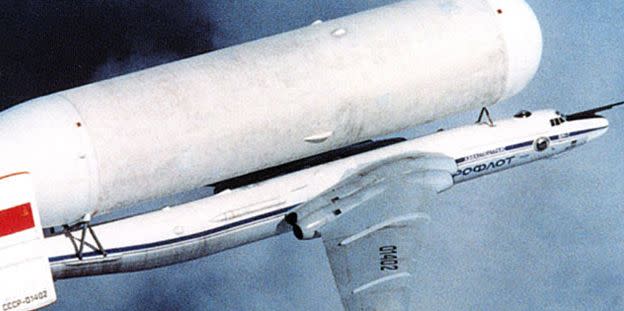
On January 6, 1982, a bizarre beast rolled out on the runway at the top-secret Soviet flight research center in Zhukovsky, 25 miles southeast of Moscow.
At first glance, this perplexing plane looked like a giant blimp with a skinny swept-wing aircraft attached to its belly. But, surprisingly, it was the other way around. The aircraft, eventually known as the VM-T Atlant, hoisted a bulbous cargo container filled with secret soviet equipment.
The name was fitting. In Russian, “Atlant” means “Atlas,” and it looked like this refitted Cold War bomber was carrying the space dreams of the entire Soviet Union on its back.
Big Rocket, Big Problem
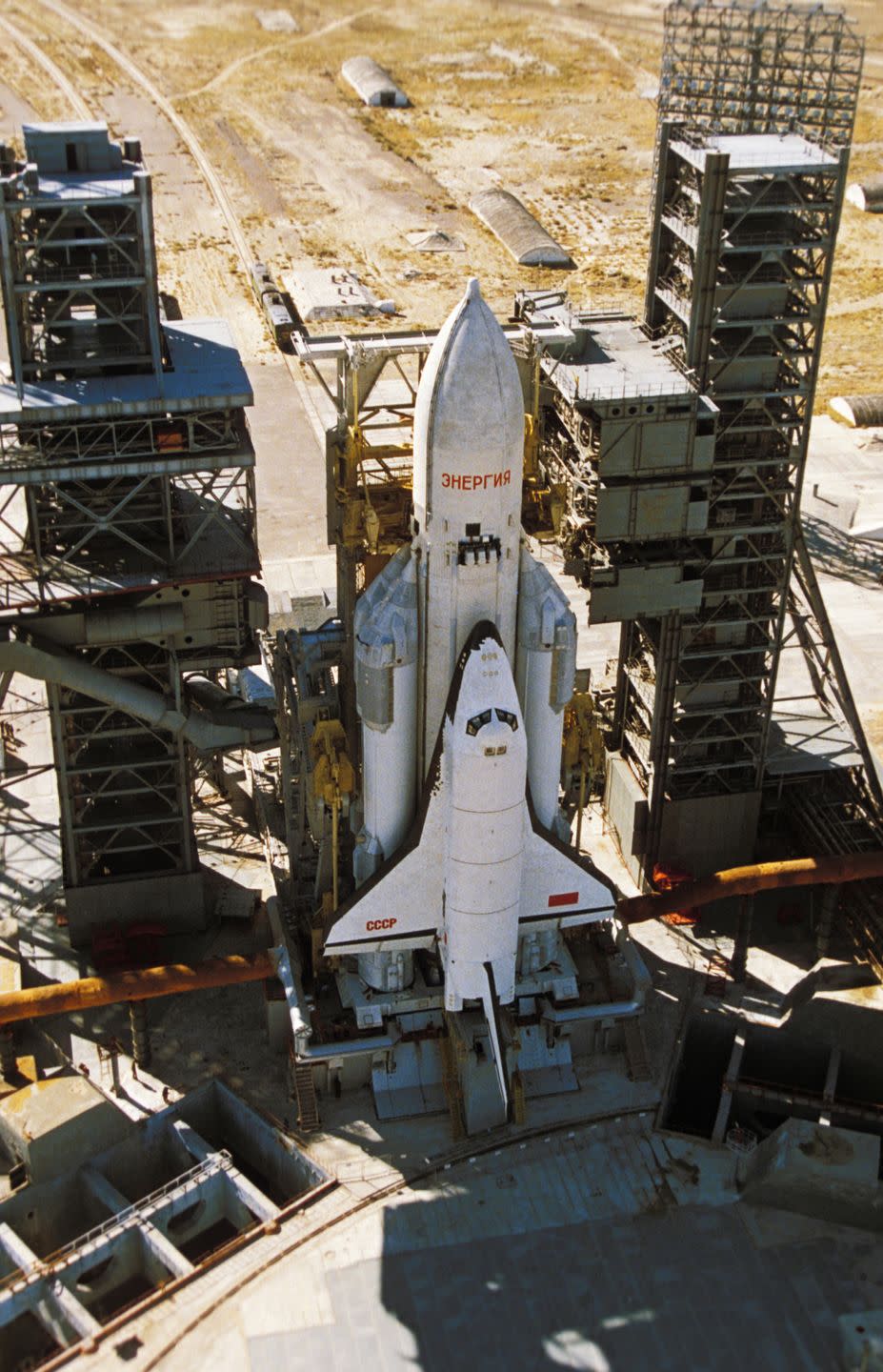
Six years earlier in 1976, the USSR began development of the Buran reusable orbiter and Energia super rocket, Soviet equivalents to the U.S.’s Space Shuttle and solid rocket booster, respectively. But the USSR had a distinct disadvantage compared to America: geography. Without the U.S.’s enviable coastlines, engineers realized that the monumental size of the rocket and the space shuttle meant they couldn't use the country’s railroads to transport rocket parts. This was the traditional method for delivering rocket components from the country's industrial heartland to the remote launchpad in Kazakhstan, but the gargantuan size of the Energia and Buran meant this was practically impossible.
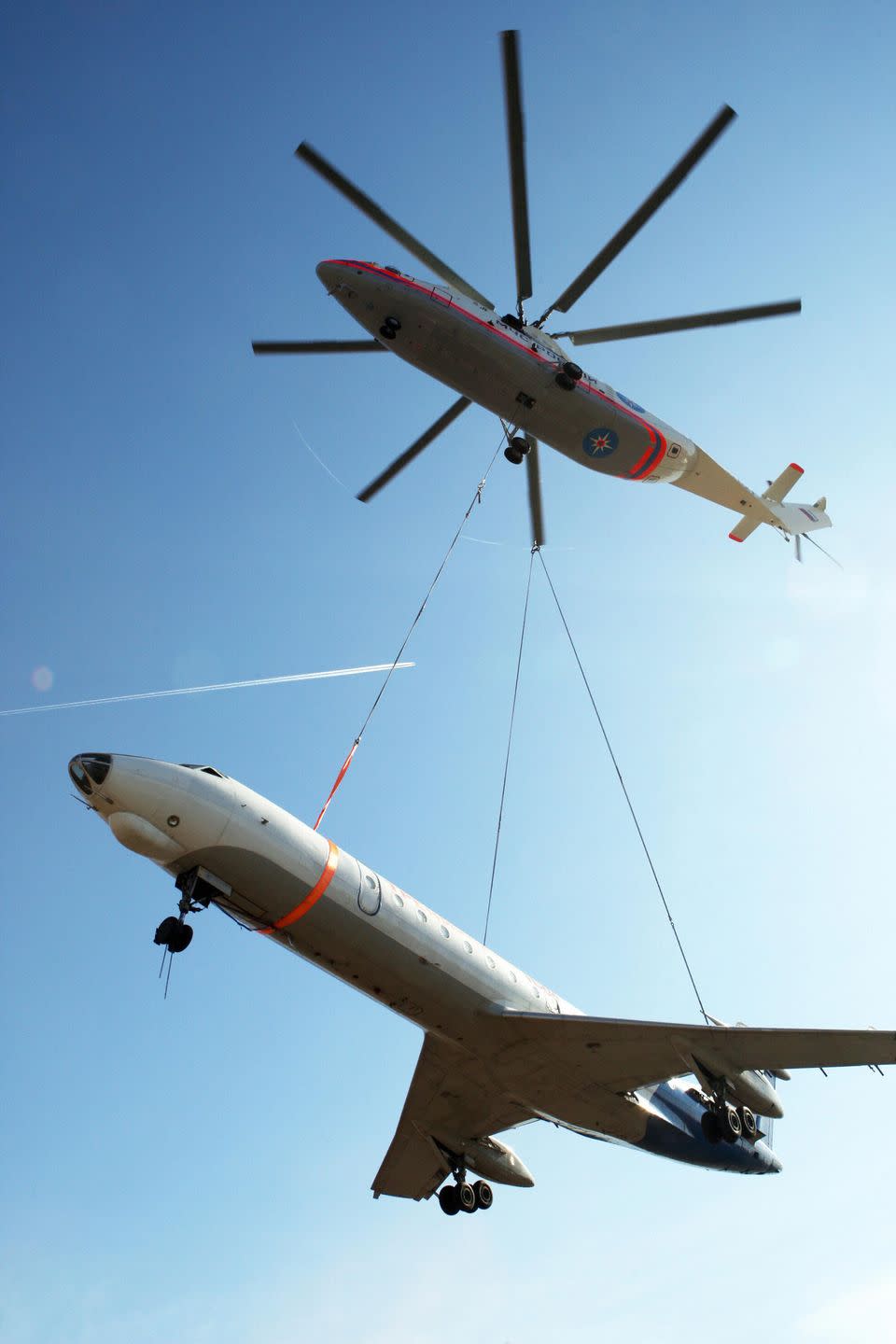
Moscow considered building the rocket right next to the launch site (as was done with the ill-fated N1 moon rocket) but gave up on the idea because moving an army of workers to the semi-desert—thousands of miles from the closest population center—would cost way too much. Instead, the Soviets considered every conceivable mode of transportation, including an oversized highway, a scaled-up railroad, or even a giant water skimmer with a liftoff mass of 3,500 tons.
Realistic options were quickly narrowed down to air transport, but no existing Soviet aircraft had nearly enough capacity to carry such a large payload. The brand-new Mi-26 helicopter could lift up to 26 tons and looked promising enough to initiate a series of gut-wrenching flight tests to prove that a duo, trio, or even a quartet of helicopters, flying in formation, could lift and carry the necessary load. But, during one of the trials, a slight turbulence caused ominous pendulum swings of the simulated cargo, forcing terrified pilots to dump the payload.
With helicopters out of the picture and several existing fixed-wing aircraft ruled out as too small, Moscow decided to custom-build a transport plane large enough to carry the rocket and the orbiter. Today’s world-famous An-225 Mriya transport aircraft appeared on the drawing board, which, as its name suggests, could carry up to 225 tons of cargo (a fully-loaded Buran orbit weighed just over 100 tons). Engineers at the Antonov Design Bureau even considered a larger aircraft, called Gerakl (Heracles), which could serve as a flying launch pad for a large space plane. But the plane never materialized.
While the Mriya appeared to be the Soviet’s best bet, its development was well behind the Buran and Energia, so the engineers went looking for an interim solution.
An Unbelievable Alternative
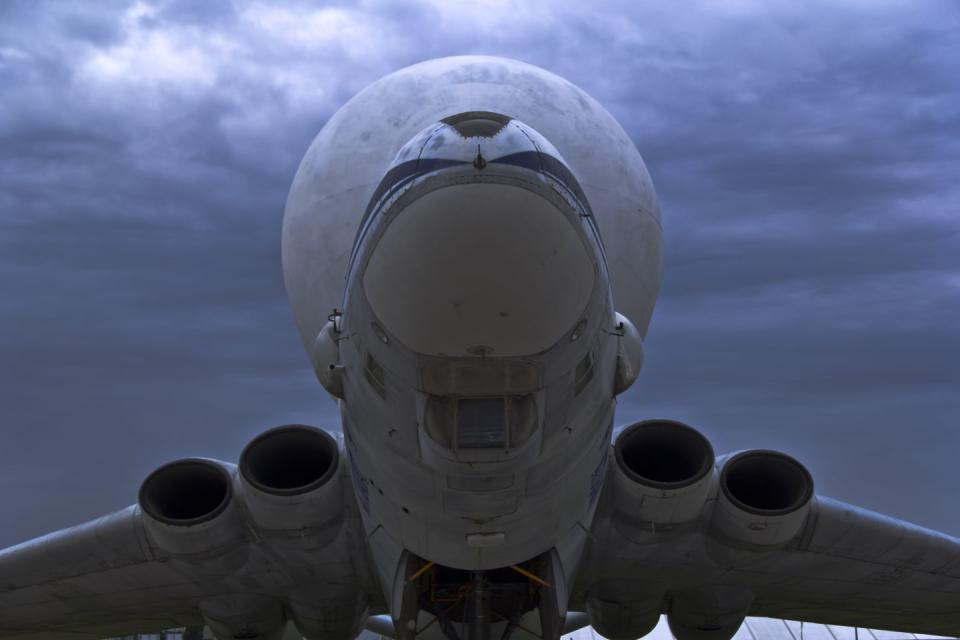
Back in the 1950s, Myasishchev Design Bureau built one of the earliest methods for the USSR to deliver nuclear armageddon to North America. The resulting 3M strategic bomber was a four-engine, swept-wing aircraft. The aircraft was powered by VD-7 turbojet engines, but its most distinctive feature was its "bicycle-type" landing gear, centered under a fuselage, with small auxiliary wheels on its wingtips.
But when the aircraft appeared in full metal, the 3M bomber fell short of the flight range required to bomb the U.S., and the rise of the intercontinental ballistic missile diminished its designed purpose even further. During the 1960s and the 1970s, the 3M aircraft earned a very mixed reputation in the Soviet air force due to numerous and deadly flight accidents.
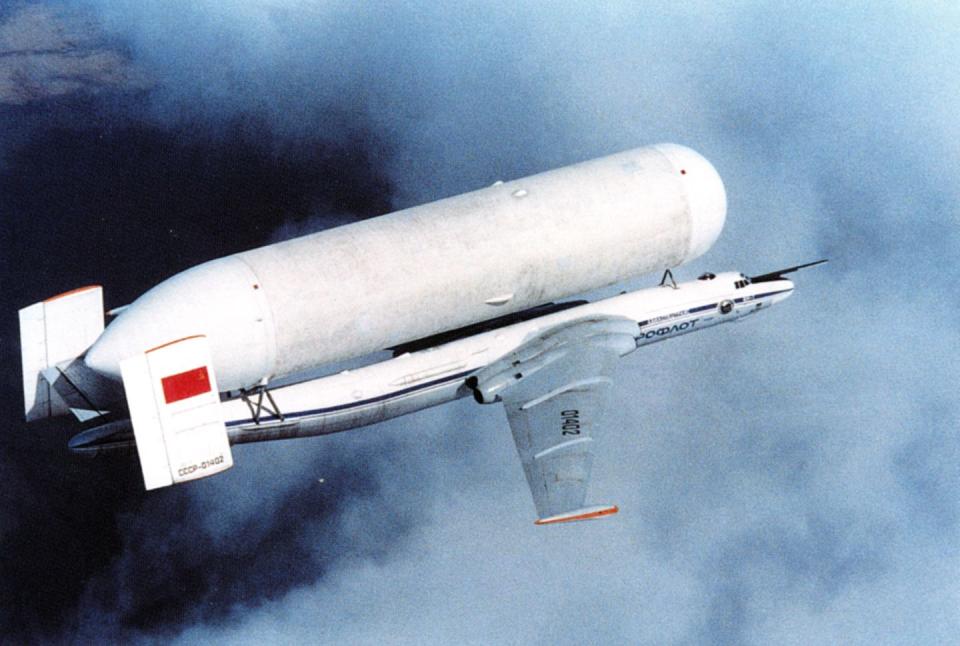
Without the Soviet space program and its Buran space shuttle, the 3M bomber would’ve enjoyed quiet retirement. Because of its mixed service record, the idea of converting aging 3M planes into a transport version, dubbed 3M-T, had its share of skeptics. But the father of the 3M, Vladimir Myasishchev, pressed on and went to work in 1977 to build five versions of the aircraft for different components of the Energia-Buran system.
The fuselage of the bomber was stretched by nearly 15 feet to accommodate its cargo, its single tail was replaced with dual vertical stabilizers for better flight stability at lower speed, and more powerful engines (VD-7MD) included an afterburner for extra thrust during takeoff. Still, the 3M-T could not carry the fully assembled Buran orbiter or the core stage of the Energia rocket. But it could lift its major pieces—not exceeding 50 tons—which could then be assembled at Baikonur Cosmodrome.
The improvised air transporter would go one to have one of the most shocking appearances in aviation history. The hydrogen-fuel tank of the Energia rocket along with its aerodynamic shrouds had a length of 146 feet and a diameter of 25 feet. The diameter of the 3M fuselage was just north of 11 feet. When the aircraft began hauling its oversized loads to Baikonur in 1984, it became informally known as a "летающая бочка," a "flying barrel."
Getting the Job Done
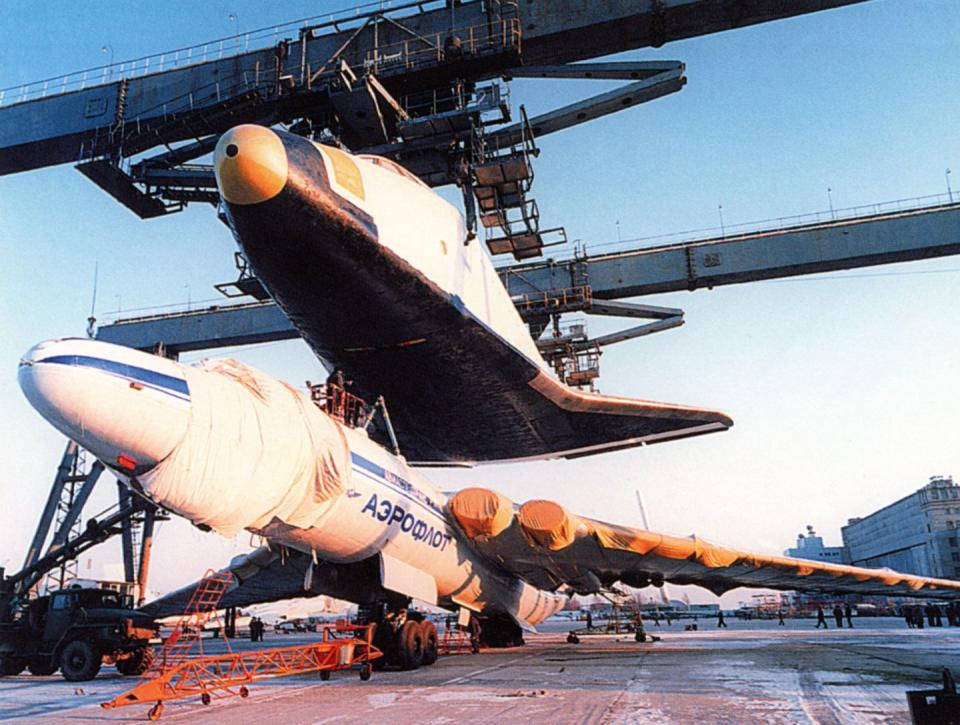
In addition to the difficulty of controlling the unusual structure in the air, 3M-T pilots had to carefully monitor the internal pressure inside the tanks of the Energia rocket itself. The loss of pressure inside the cavernous vessel could make the descent of the aircraft impossible. That’s because the increasing pressure of the atmosphere at lower altitude could collapse the entire structure, likely causing a catastrophic accident. To make matters worse, the transport version of the 3M wasn’t immune from technical problems that had given a bad reputation to its military predecessor.
During one flight test in 1983, the 3M carrying the mockup of the Buran orbiter skidded off the runway and got stuck in the mud. The recovery operation was apparently long enough for the American spy satellites to capture images of the secret vehicle and the artist reconstructions of the incident made it into the Western press.
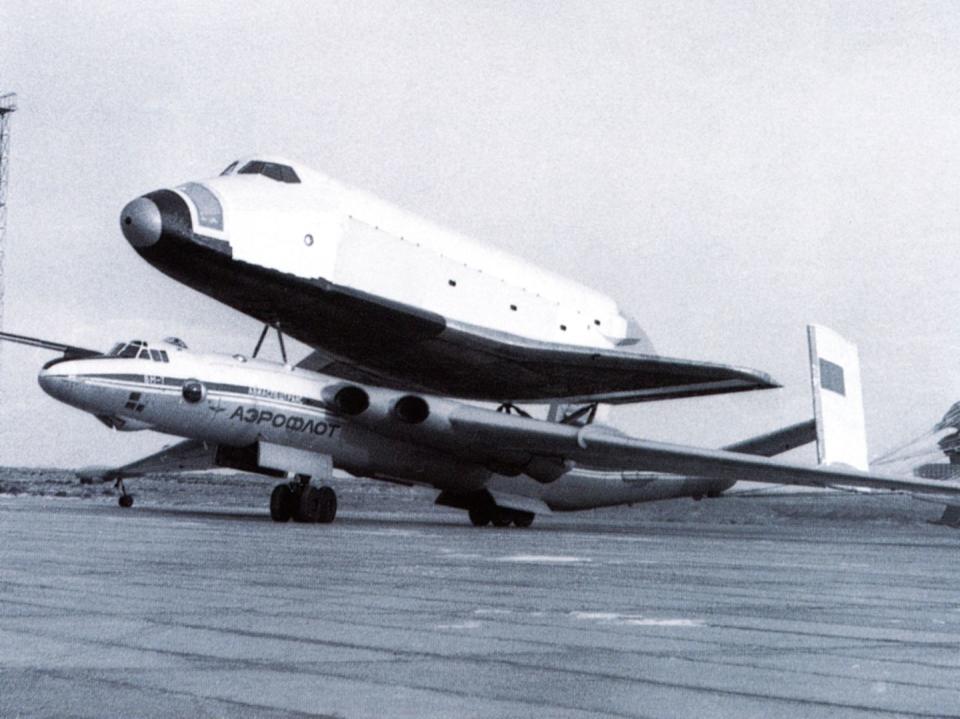
During another flight in 1988—this time with a flight-worthy Buran orbiter—two engines on the left wing of 3M-T shut down due to a fuel leak. Fortunately, the aircraft was already in its final approach and the pilot safely landed on the runway under the power of only two running engines.
Overall, 3M-T made more than 150 ferry flights, delivering components to Baikonur from the rocket factory in the city of Kuibyshev (present-day Samara) and from Ramenskoye airfield near Zhukovsky, to pick up the Buran shuttle (which was actually built at Tushino Mechanical Plant and transported to Zhukovsky-Ramenskoye by barge).
In December 1988, the much larger An-225 Mriya finally arrived and the 3M-T was quickly retired. But the entire Energia-Buran program would soon follow suit, stalling in the waning days of the Soviet Union.
As many Russian aerospace firms struggled to survive the post-Soviet economic transition, the creators of 3M-T tried to find foreign customers for their remarkable machine, including a proposal to the European Space Agency to use it as a carrier for the Hermes mini-shuttle. But the European space plane never made it to the launch pad and all other ideas to use 3M-T came to nothing.
Before being displayed in public for the first time in the early 1990s, the highly classified 3M-T designation changed its name to VM-T Atlant, where "VM" matched the initials of Vladimir Myasishchev.
In 2013, one of three existing VM-T aircraft made a rare public appearance at its home runway of Ramenskoye near Zhukovsky, which hosted the Moscow Air and Space Show. With a mix of awe and sadness, I saw the decaying and inoperable VM-T aircraft on the tarmac, still carrying the hardware from the Energia rocket on its back.
Both were destined to never fly again.
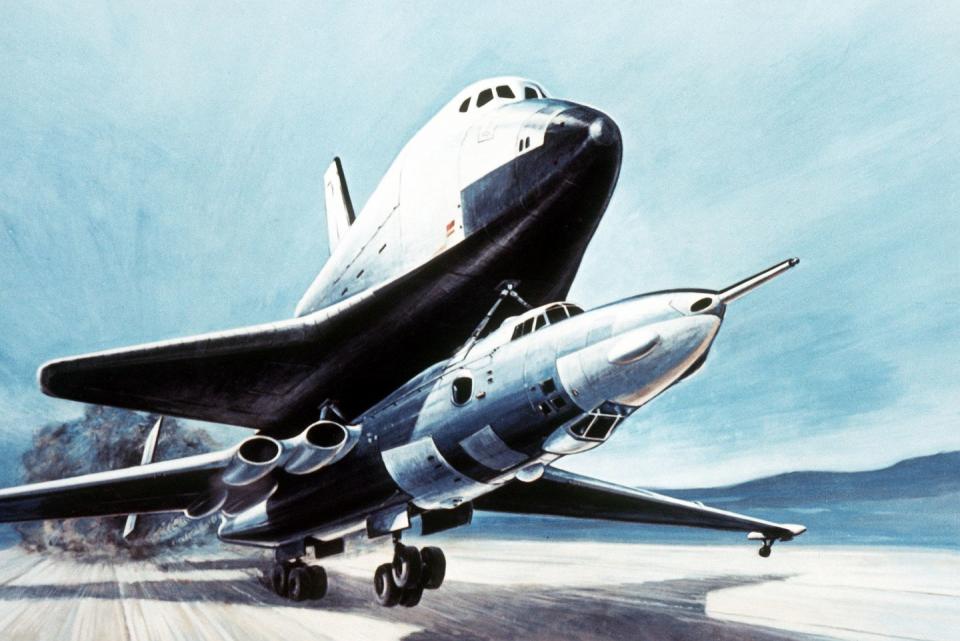
Anatoly Zak is the publisher of RussianSpaceWeb.com and the author of Russia in Space: the Past Explained, the Future Explored.
You Might Also Like

